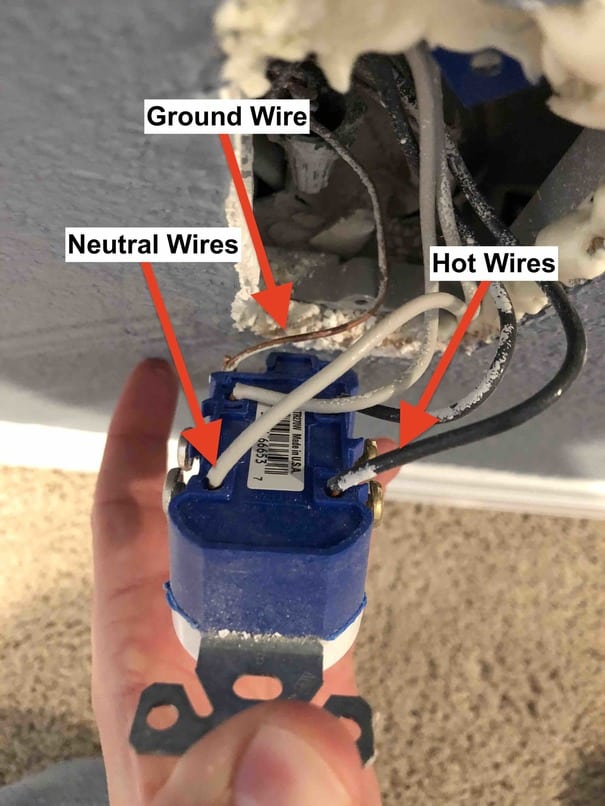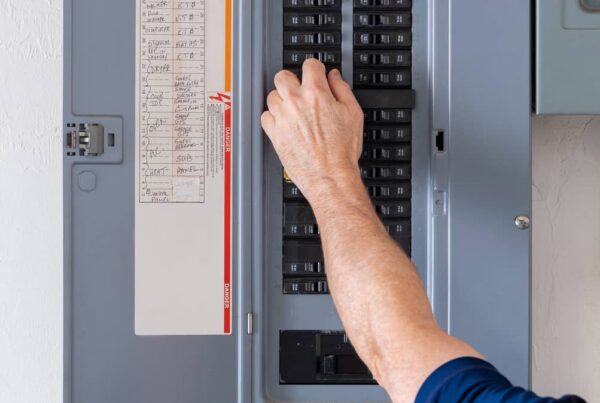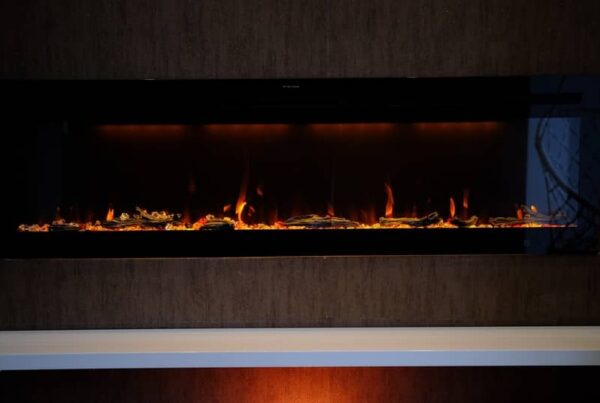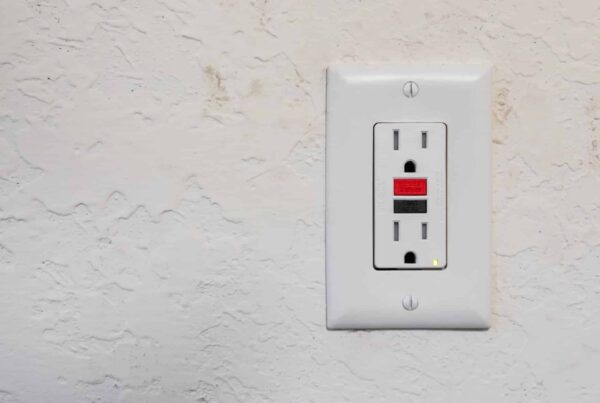
Reverse Polarity is when a receptacle is wired backward. This happens when the “hot” wire, also known as the black or red wire, is wired on the neutral side and the neutral wire is wired on the “hot” side. Looking at the featured image above, the outlet tester shows exactly this.
While the circuit is still completed, this can create a dangerous situation.
How An Outlet or Light Fixture Works
Before understanding how a reversed polarity receptacle is dangerous, we should understand how a normal outlet works.
When an outlet is wired, the right side is typically the hot side in which the black wire reaches the outlet. This is always going to be the side of the outlet with the smaller notch.
Then, on the opposite side, the neutral wire awaits for the circuit to be completed through the plug or light bulb. This will always be the larger notch on the outlet.

Now, if say a lamp were to be plugged into the outlet, the hot wire goes to the lamp and the lamp switch either turns the light on or off. Therefore, there is no power going to the lamp socket if the switch is off. Once the switch is activated, the light socket can complete the circuit by sending electricity to the neutral wire.
Take a look at the diagram below:

Why Is Reverse Polarity Dangerous?
When an outlet is wired in reverse, the hot wire is now on the supposed neutral side. So, if you were to plug in the same lamp as noted above, the lamp socket would have power even if the switch was off since the switch is only on the hot side. All it takes is for someone to complete the circuit by touching the metal and sending the electricity to the “ground”.
Take a look at the diagram below:

Reverse Polarity not only affects lamps, but it could affect your toaster too. Say for example, your toaster was plugged into an outlet that was wired in reverse. If you were to stick your knife in that toaster to retrieve your toast, you could get shocked if your knife was to touch the metal.
This is why reverse polarity can be so dangerous.
How To Know If Something Is Reverse Polarity?
The good thing is your home inspector will typically let you know if an outlet has been wired in reverse. The most common cause of an outlet being wired in reverse is just unprofessional workmanship.
You can also test for reverse polarity by purchasing an outlet tester from your local store or Amazon.
Here’s an image of an outlet tester and how the tester signals different wirings. In this case, the outlet is wired properly.

How To Fix An Outlet With Reversed Polarity?
Luckily, fixing an outlet with reverse polarity is relatively easy. Follow these steps to fix your outlet:
- Turn off the power to the outlet/room.
- Remove the outlet cover and outlet from the wall.
- Remove the black/red and white wires from the outlet.
- Switch the black/red and white wires to the correct side.
- Ensure the wires are properly secured and making good contact.
- Put the outlet back in the wall with the cover on.
- Turn back on the power.
- Test the outlet with your outlet tester to ensure it is functioning properly.
Here is an image with the correct wiring.

Switching The Wires On Push-In Connector
Most wiring for outlets are connected via screws on the sides of the outlet. However, you might have a “push-in” type where the wires are pushed into the back of the outlet.
To remove the wires from the push-in type, you will need a small object like a small flat head screwdriver. Push the small flat head screwdriver in the notch directly next to the wire while at the same time pulling out the outlet.
Here is a video.
Concluding
As home inspectors, we find reverse polarity outlets quite frequently.
Reverse polarity is when the hot and neutral wires are wired in reverse. This can create situations where people get electrocuted by using appliances like a toaster or a lamp.
Reverse polarity can easily be fixed by switching the wires to their corresponding sides.
If you have additional questions or concerns, be sure to drop a comment below.
Also, feel free to check out our other electrical posts.



